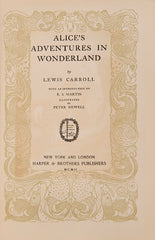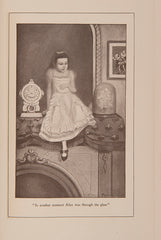Written by Oliver Bayliss
The son of a bookseller, Roddy has spent most of his working life in the rare books trade. Having worked for a specialist auction house, where he became head of the book department, Roddy now works alongside Angus Robb in the Literature department, focusing on Modern First Editions and Children's Books.
How did you get in to rare books?
During my supposedly formative years I would accompany my father, a bookseller specialising in maritime books, as he toured secondhand bookshops looking for nautical tomes. I would dedicate my time to scouring the Fiction shelves for cool-looking science fiction and fantasy titles, seduced by the lurid (and often wholly irrelevant) jacket or wrapper artwork. A short spell working for my father introduced me more to the rare book scene, and to the satisfaction obtained by sourcing and matching a book to a client’s interests. Then, armed only with dubious resumé and a hackneyed Samuel Johnson quote, I somehow convinced Bloomsbury Book Auctions’ dreikaiserbund of Kerr, Herrmann & Stagg to let me join their cataloguing team…it was all uphill from there.
What is your favourite rare book?
I don’t think I really have one…books I have genuinely loved handling include Piranesi’s Le Carceri d'Invenzione, Pickering’s 1847 colour-printed edition of Euclidean geometry, the large format edition of John Martin’s dark mezzotints for Milton’s Paradise Lost, and the wonderfully tactile private printings of Beatrix Potter’s first two books. But really I am a sucker for modern first editions of the 1920s & ‘30s, whether in wonderful dust-jackets or with excellent association, or even both…
What's the most expensive book you've ever sold?
Over the years I’ve been directly involved in the selling of numerous extremely valuable works, from the First Folio Shakespeare (1623) and the first edition of Vesalius’ De humani corporis fabrica (1543) to inscribed first editions of Dracula and signed first hardback editions of Harry Potter and the Philosopher’s Stone (1997). Recent highlights would have to include a fine first edition set of Bertrand Russell’s Principia Mathematica (1910-13) in near original condition.
The rare book world is global, where has this job taken you?
I am not as well travelled as some of my colleagues sadly, but so far I have been to Paris, Rome, Milan, New York, Boston & Los Angeles on book business. And Bristol. I’ll always have Bristol.
Any advice for budding young collectors?
Some people do look to the rare book world, and especially modern first editions, as a potential form of alternative investment – some authors are certainly more ‘blue chip’ than others, but nothing is 100% guaranteed! So I would recommend going for something you feel passionately about, whether an author, genre, subgenre, &c. If you are starting off collecting on a limited budget look for authors or genres where there is a variety of entry points, such as Ian Fleming and Agatha Christie – an excellent example of this is the Seamus Heaney collection being offered by our sister company Mayfair Book Auctions, where you can start collecting early appearances of Heaney signed by the great man himself for less than £100, whilst at the top-end you could pay closer to £10,000 for his extremely scarce works signed or inscribed. Also, be wary of taking the internet too seriously…it is a minefield, and no substitute for collaborating with a specialist with relevant experience…but maybe I would say that…
If you had to choose one book currently on the shelves at Shapero to add to your own collection, what would that be?
Monty Python and the Holy Grail – The Book of the Film! The actual prop used in the film, first appearing just after King Arthur has recruited Sir Bedemir to his Knights of the Round Table, whereupon it is used to introduce the other Knights to the audience, with photos of the characters, notably Sir Robin in increasing degrees of cowardice, I can relate to that.




















Leave a comment